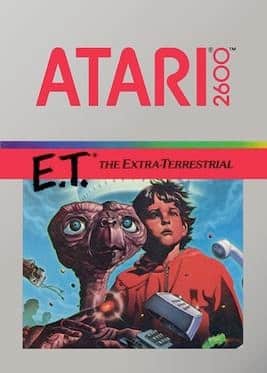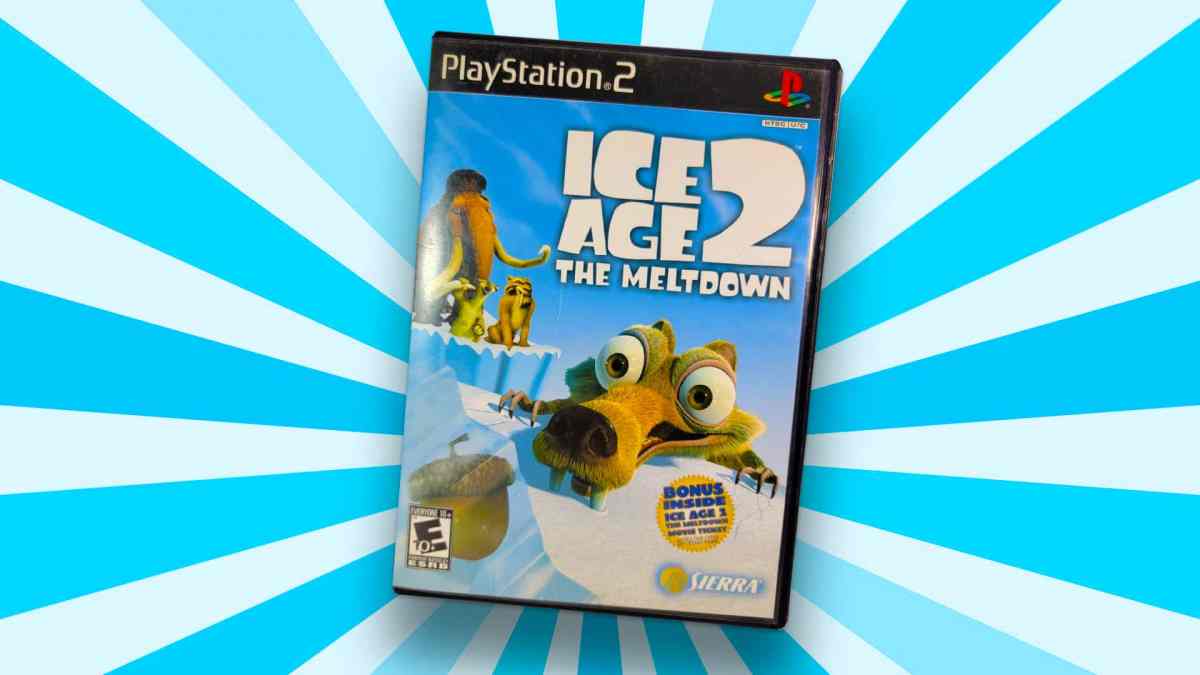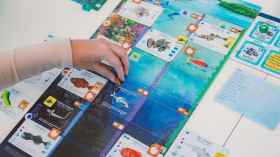Movie tie-in games. If you were a kid in the 2000s, you were probably traumatised by at least one of them. Bargain bins at video game retailers were littered with sub-par titles, and when the staff dobbed to your mum about the explicit content of Grand Theft Auto: San Andreas, you were forced to pick something more age-appropriate.
During their peak, seemingly every movie – Disney, Dreamworks, or otherwise – received a video game adaptation. Notoriously, they were often cash grabs, riddled with bugs and unfinished-feeling mechanics thanks to rushed development cycles and limited budgets; a reputation that was well earned through their long history, which started in the late 1970s.

E.T. the Extra-Terrestrial for the Atari 2600 is the most infamous flop, sparking the urban legend of a mass dumping and burial of millions of unwanted cartridges in the New Mexico desert. It was proven to be an exaggeration when the site was exhumed in 2014, but remains one of the most overtold stories in video game history.
People have an axe to grind with movie tie-in games – and I get it. If you were forced to complete mundane side quests for a PS1 version of Hagrid when all you really wanted was to paint the town blue in Halo, I don’t blame you for saying that they suck. But for me, there’s a certain je ne sais quoi to the genre.
It’s near impossible to see gameplay of an older game on YouTube without a goofy thumbnail and a clickbait title including the words ‘terrible’ or ‘broken’ in all caps. I’d argue that what they often mean is that they’re dated, rather than genuinely bad. As someone who has played a lot of questionable games, I can confidently say that there are absolutely some hidden gems in the mix.
So, what happened to movie games? Did they peak and fizzle in the age of CRT TVs and inflatable furniture? Well, while they might not be made for every single blockbuster now, they still slip through the cracks. Where THQ or EA once published many of the biggest names, a publisher called Outright Games has now cornered the market.
Perhaps the more pertinent question is: are old movie tie-in games as bad as their reputation? Are the new ones better adaptations, or better games in general? That’s what we’re here to investigate, by comparing old and new movie games to determine whether they’re still as heinous as ever.
As a disclaimer, there’s nothing scientific (or fair) about these comparisons. To level the playing field as much as possible, I’ve chosen games from the same franchises (to compare like for like) and they’re all games that I didn’t own as a kid, so there’s no risk of nostalgia blinding me.
Table of Contents
Ice Age 2: The Meltdown (2006) for PS2 vs. Ice Age: Scrat’s Nutty Adventure (2019) for PS4
I didn’t realise that playing as a Pleistocene rodent was my dream gaming experience, but here we are. The way Scrat stamps his little feet in frustration and hurls rocks at his enemies just stirs something deep within my soul. Lucky for me, both of these Ice Age games allow you to walk a mile in the shoes of this skittish little nut enthusiast.
Ice Age 2: The Meltdown is a retelling of the movie of the same name, that sees you flinging yourself between platforms, diving underwater and fighting off foes with your bare claws to collect nuts. It’s truly the prime example of a 2000s era movie game; capitalising on its audience’s love for the characters to make them complete sick and twisted mini-games. At one point, you need to correctly anticipate the farts of a ‘bear’ with IBS to lift you up to higher platforms. Is there any better fun? I think not.
The mini-games are noticeably absent from Ice Age: Scrat’s Nutty Adventure. Instead, it focuses more on puzzles and unlockable abilities. It plays similarly regardless, with plenty of platforming and gem collecting interspersed with slapstick cutscenes as Scrat pursues his prized nut. The storyline isn’t a heavy focus, but it centres around an ancient civilization called the Scratazons, introduced in the 2016 movie Ice Age: Collision Course. The sexy Scrat-like alien at the end of the game is bewildering if you aren’t up to date with the extensive lore of Scrat’s cinematic universe.
It’s difficult to differentiate these two games; they both offer equal opportunities to unleash your chaotic energy, and are visually impressive for their time. If you’re a rabid Scrat fan like me, either will do nicely. Given that Scrat’s Nutty Adventure was made thirteen years later and it doesn’t add anything vastly different to the formula, Ice Age 2 deserves the golden nut.
Spirit Stallion of the Cimarron: Forever Free (2002) for PC vs. DreamWorks Spirit Lucky’s Big Adventure (2021) for Nintendo Switch
As the old adage goes: don’t look a gift horse in the mouth. When it comes to the dedicated community of horse girl gamers, that means: any horse game is good, even if it’s bad.
Horses are incredibly difficult to animate and developers don’t usually have the resources to focus on both anatomical accuracy and ticking every box in terms of customisation, story and worldbuilding. As a result, players have to take what they can get.
So what happens when two worlds collide? When you cross a horse game with a movie game, is it doubly difficult to get it right? In the case of the Spirit franchise, the answer seems to be a resounding ‘yes’.
In Spirit Stallion of the Cimarron: Forever Free, Spirit’s herd has been captured and you need to complete a series of fetch quests to free them. You control Spirit by incessantly clicking the left and right mouse buttons to make him run and jump around the map. There’s little more than repetitive strain to be gained from the one hour campaign. It doesn’t capture the emotional essence of the film – perhaps because it lacks the voice of Bryan Adams in symphony with enthusiastic horse whinnying – and it has possibly the most anticlimactic ending I’ve ever seen in a game.
On the other side of the ring, there’s Dreamworks Spirit Lucky’s Big Adventure, an open-world adventure about Spirit (Jr.) – who I did not realise was a different horse without my own research – and his owner, Lucky. It follows on from the 2021 movie Spirit Untamed, allowing you to explore familiar locations in Miradero and join forces with Lucky’s friends to stop the antagonist: a horse wrangler named Hendricks who is far too old to be skulking around and stealing treasure maps from 12-year-olds.
Of all the new-era movie games here, this is the closest to what we knew and loved in the golden days. Yet it isn’t flawless: a stuttering frame rate when you sprint, assets that only snap in place when you get close to them, and rough textures on the landscape. Ice Age 2’s environments from fifteen years earlier mop the floor with this game.
Neither of the Spirit games are the fabled perfect horse game that the community so desperately wishes for, but Lucky’s Big Adventure is still a passable RPG for its intended young audience, so it takes the win.
The Lord of the Rings: The Return of the King (2003) for PS2 vs. The Lord of the Rings: Gollum (2023) for PS5
For the deciding round, we have a beloved franchise and what is considered by many to be its best game adaptation, if not one of the best movie tie-in games ever made: The Lord of the Rings: The Return of the King.
You might think that comparing a PS2 game to a newly-released PS5 title is unfair. You would be right. Because Return of the King on PS2 slays, even twenty years later.
Sure, Return of the King‘s progression structure is grindy by modern standards, and the controls can feel unresponsive at times. But the combat is challenging (in an old-school way), the graphics are decent, and it follows the movie closely, allowing you to play as favourite characters to hack n’ slash your way through key battles. There’s an unmatchable feeling of triumph in skewering Shelob and watching the stats roll in on the victory screen as The Fellowship theme song swells in the background. It’s everything a movie game should be.
By contrast, The Lord of the Rings: Gollum forges a new path using the Middle-earth IP. Though not a straight-up movie adaptation, it clearly draws on material and approaches from Peter Jackson’s films, as well as the original source material to craft a new narrative that fills the gap in Gollum’s story – between The Hobbit and The Lord of the Rings – when he was held captive by Sauron. It also happens to be one of the worst reviewed games of 2023.
The sentiments of critics echo my own: it doesn’t look or feel great, nor is the story engaging enough to make it worth sitting through. The world is visually unappealing, with Orcs that look like they stepped straight out of Oblivion (2006) – though mercifully omitting the creepy face zoom.
The stealth and platforming mechanics are wearisome at best, and broken at worst. The level design lacks clarity and the controls glitch often, leading to monotonous repetition. It’s devastating. If you enjoy torturing Sméagol (and yourself) you may find some enjoyment in that – the death animations elicited a giggle from me on occasion.
Unfortunately for LotR fans and the developers at Daedalic Entertainment, Gollum’s poor reception has led the company to shut down their development studio, and focus solely on publishing. There are plans from Embracer Group to ‘exploit’ the franchise in future, with further Lord of the Rings games to come, so we may yet see the new-gen Middle-earth game of our dreams.
Alas, this recent debacle makes Return of the King the clear winner here.
The Moral of the Story
If you’ve been keeping score, you’ll know that the jig is up for modern movie games. It appears that they just don’t make ‘em like they used to. If you didn’t live through the peak movie game era, you might be happy with what’s being produced today, though the range is comparatively much more limited, and the games themselves lack the quintessential hijinks that make a ‘bad’ game loveable.
We probably can’t draw a solid conclusion about all movie games from this limited case study, but it gave me an excuse to pull my PS2 out of storage, and it’s fun to reminisce, isn’t it?





